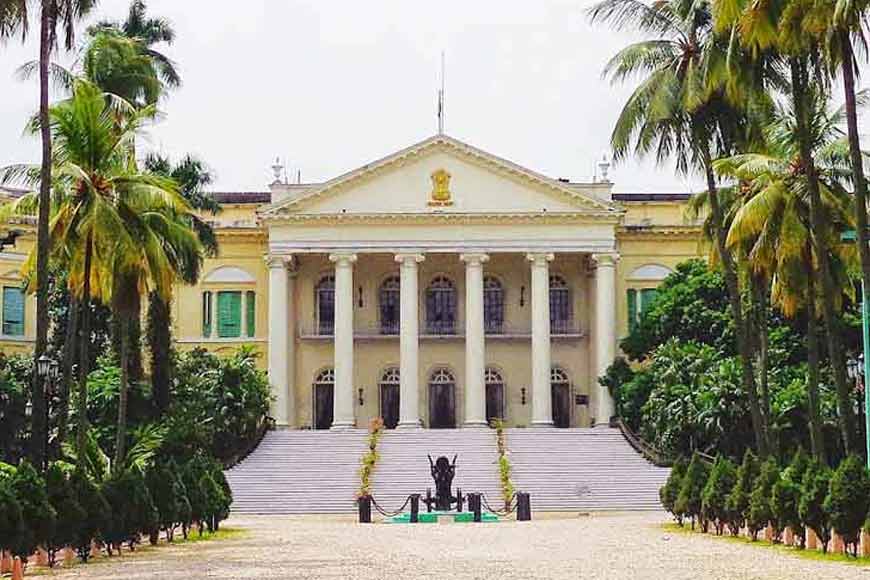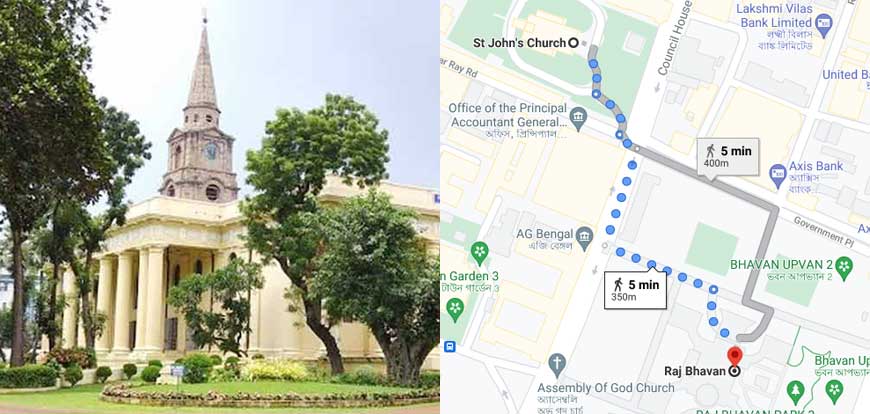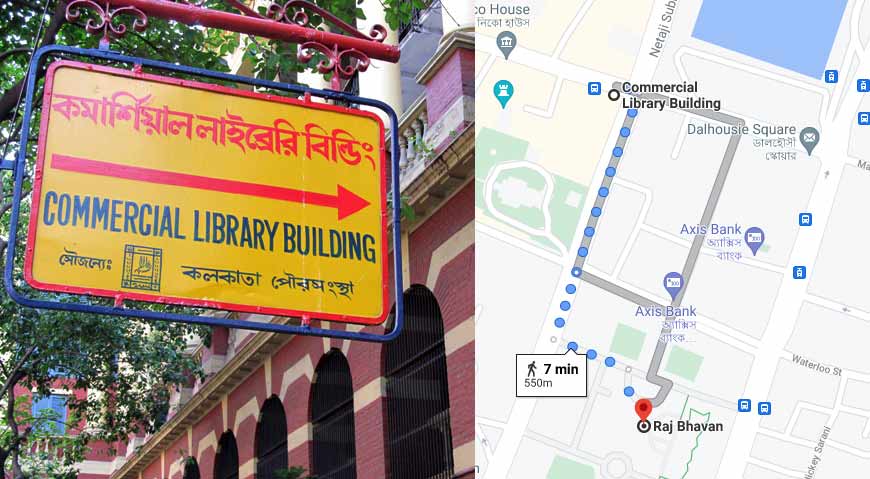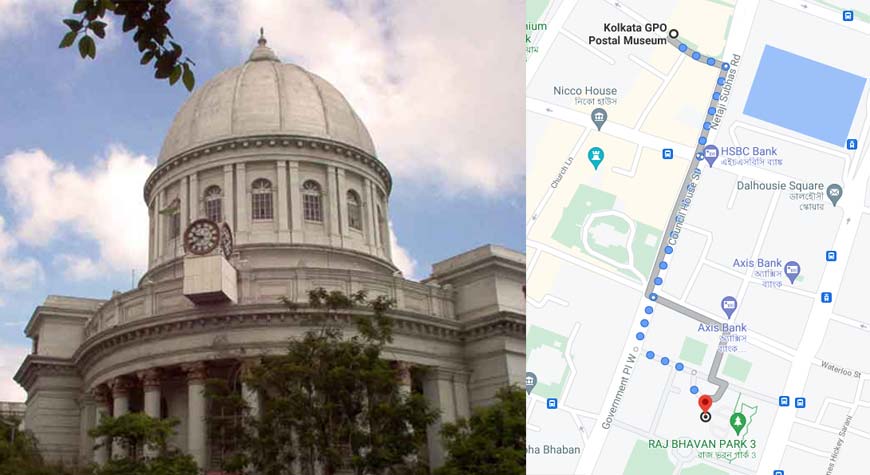Enjoy the lockdown with your very own customised Kolkata Walk

Ever since the Covid-19 pandemic has taken over our lives, the definition of what is normal has changed almost daily. We all know that this will pass one day, as all clouds do. Meanwhile, what we still can do is to take small steps towards a post-Covid world, by doing things we may not have done before. Walking around the streets of Kolkata would be a good example. But since we do not want you to wander aimlessly, every weekend, we will offer you a sort of guided tour of where you can start and end. And since the lockdown is the best time to walk around a busy city, why not start next week itself?
Our first walk is set in the BBD Bag area, perhaps the most obviously British of Kolkata neighbourhoods. We have kept it short initially, so that you do not exert yourself too much, but the walks will get longer as the series progresses. So here’s your first route:
Point A - Raj Bhavan
In the early 19th century, Calcutta was already known as the ‘City of Palaces’, and ‘St. Petersburg of the East’. The richest, largest and most elegant colonial city in India, it had acquired its fame thanks to colossal structures such as the Raj Bhavan, which began life as Government House in 1799. That year, the then Governor-General of India, Lord Wellesley, took the initiative of building a palace, which he believed was suitable for a member of the ‘ruling class’. Earlier governors-general had administered the country from a rented mansion which occupied the land where Raj Bhavan now stands.
Government House was ready in four years, at a stupendous cost of £63,291 (about Rs 39 crore in today’s terms). Wellesley was charged with misuse of the East India Company’s funds and was recalled to England in 1805. He may have lost his job, but he does take the credit for one of Kolkata’s finest colonial palaces. In 1892, as is well known, Otis Elevator Company installed India’s first elevator at the Raj Bhavan.
Point B - Treasury Building
To the west of the North Gate of Raj Bhavan is Council House Street, and the point where it intersects with Kiran Shankar Ray Street was where the Council House of the East India Company’s directors came up in 1766. Once again, Wellesley’s tenure saw the demolition of the Council House and a few other notable private residences of the area in 1797, and the site dedicated to the construction of the Treasury Building. Originally meant to accommodate the offices of the finance department of British-India, it now houses several important offices of the West Bengal accounts and audit departments.
Treasury Building
Point C - St John’s Church
Originally a cathedral, St John’s Church (or Kirk) was among the first public buildings built by the East India Company. It stands at the northwestern corner of Raj Bhavan, and was the Anglican Cathedral of Calcutta until 1847, when the much larger St. Paul’s Cathedral took over. Construction began in 1784 with Rs 30,000 raised through public lottery, and was completed in 1787. The land on which the church stands was a gift from Maharaja Nabakrishna Bahadur of Sobhabazar.
 St John's Church
St John's Church
St John’s is important not only as the third oldest church in Kolkata, next to the Armenian Church of the Holy Nazareth and Old Mission Church, but also for the important burials on its grounds - from Job Charnock to Lady Canning to ‘Begum’ Frances Johnson - and the Black Hole Monument, commemorating the infamous Black Hole Tragedy. Also famous is the painting of the Last Supper by renowned painter Johann Zoffany, which was renovated a few years ago and restored to its original glory.
Point D - Commercial Library
If you turn left along Council House Street from St John’s Church, a short walk will bring you to this magnificent red-brick structure, built in 1885 in honour of a visit by the Prince of Wales, who went on to become King Edward VII. Incredibly graceful and elegant despite its massive size, the building today houses the Commercial Library on the first floor, where you can browse through books and documents that are a treasure trove of information on India’s imports and exports, and its industrial development.
 Commercial Library
Commercial Library
Point E - GPO and Postal Museum
The site where the General Post Office (GPO) is located, at the crossing of Netaji Subhas Road and Koilaghat Street, was actually where the first Fort William stood. A narrow lane beside the post office was allegedly the site of the small guardhouse which became the notorious Black Hole of Calcutta in 1756. The modern GPO, one of Kolkata’s most beautiful colonial structures, was designed in 1864 by legendary architect Walter B. Grenville, who waas consulting architect to the government of India from 1863-68. The staircase to the eastern side now features a brass plaque marking the eastern end of the Old Fort William.
 GPO and Postal Museum
GPO and Postal Museum
Whie at the GPO, you should also take in the Philatelic Bureau and the Postal Museum. The latter is on the ground floor of a red-brick building on the southwest side of the GPO, and tells you practically everything you want to know about India’s postal history.
Of course, as you walk around, you will come across other examples of Kolkata’s colonial heritage, but we’ll keep that for next week. Happy walking!
Acknowledgement: Ten Walks in Calcutta by Prosenjit Dasgupta











